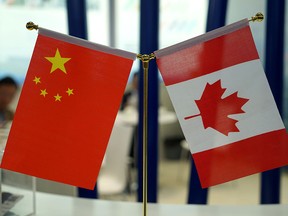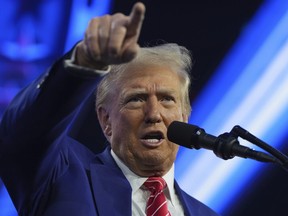Our survival as a trade dependent nation depends on it
Article content
Canada needs to engage more with China, including with its government.
Advertisement 2
Article content
In the current state of confrontation and accompanying heated rhetoric that defines Canada-China relations an argument for greater engagement with China may seem out of place. It is not. It is the only realistic and effective means for Canada to meet the challenges posed by China at home and abroad.
Article content
This is particularly the case with trade.
Canada relies on trade for two-thirds of its gross domestic product — more than the global average, two and a half times more than the United States and 50 per cent more than Australia.
While two-thirds of overall exports go to the U.S., for sectors such as agriculture, that figure drops to closer to 50 per cent. That means the global market is as important as the U.S. market.
Being reliant on global markets means exposure to China’s impact beyond direct bi-lateral trade. China is the world’s first or second-largest economy depending on the definition, and the largest global consumer and producer for much of what Canada exports. Its influence on global markets impacts Canadian exports regardless of whether they are in the Chinese market. Diversification from China often means entering markets where China is a dominant economic force. As we’ve learned in Western Canada, even if you run out of China, you still run into China.
Article content
Advertisement 3
Article content
With a country this influential to Canadian economic interests, ignorance is a self-inflicted wound. Relying on the Americans, our biggest economic competitors, for information to guide the pursuit of our economic interests makes matters worse.
So, what does engagement with China look like?
For one, it means reading what China shares. For example, every five years the Chinese government releases plans for how it will govern its economy. Yet, when asked what’s in this blueprint, Canadians impacted by trade with China often can only respond with, “it’s a plan, it’s five years and it has something to do with China.” Replacing ignorance with basic information for economic decision making is step one. Fortunately, this sort of “competency building” is a major part of Canada’s Indo-Pacific Strategy building on work done by the Canada China Business Council, Canada West Foundation and others.
Advertisement 4
Article content
Second, engagement means more trade agreements with China. Throughout COVID and despite current political tensions, trade has increased unabated. If Canadian consumers and businesses are going to increase buying and selling with China, then having more rules to manage it is better than fewer rules.
Canada can avoid going down this path alone by opting for multilateral pacts such as the Comprehensive and Progressive Agreement for Trans-Pacific Partnership (CPTPP), to which China is applying, and the Regional Comprehensive Economic Partnership, an even larger trade bloc that includes China. Having agreements with rules and allies such as Australia, New Zealand and Japan to help enforce the rules is a safer way to engage. Australia and New Zealand have signed multiple trade agreements with China including the RCEP, while balancing security concerns with Washington.
Advertisement 5
Article content
There is no reason Canada cannot do the same. Even the U.S., which tells Canada not to engage China, has signed a trade agreement with China, one that took market share from Canadian farmers. Everyone except Canada seems to have figured out that having a trade agreement with China is not only a good strategy, it’s a necessary one.
But, it takes more than trade agreements to protect Canadian interests. This has been the lesson from trade with the U.S., where Canada has suffered more grief than trading with China. Before the recent steel and aluminum tariffs, recall, for instance, one morning in August 1971 when Canadians woke to discover that the U.S. had overnight imposed a 10 per cent tariff on all exports to the United States. And more recently, the ongoing softwood lumber tariff battle and “national security” steel and aluminum tariff experience are reminders of what can happen even with close allies.
Advertisement 6
Article content
-

The U.S. sanctions on Russia, China have a dirty secret
-

Ottawa’s decision to block Chinese investment called ‘short-sighted’
-

David Rosenberg: China won’t be able save the global economy this time
To protect Canadian interests, premiers and provincial ministers and mayors engage directly with U.S counterparts with visits, taking part in U.S. meetings, joint working groups, technical exchanges and more. The complement to a “keep-your-friends-close” strategy with the U.S. is “keep-your-enemies-closer” engagement with China.
This is how we need to approach our second largest trading partner China. Our survival as a trade dependent nation depends on it.
Carlo Dade is the director of the Centre for Trade and Investment at the Canada West Foundation.
Canada needs to engage China more, not less
2023-05-21 13:00:19







Comments
Postmedia is committed to maintaining a lively but civil forum for discussion and encourage all readers to share their views on our articles. Comments may take up to an hour for moderation before appearing on the site. We ask you to keep your comments relevant and respectful. We have enabled email notifications—you will now receive an email if you receive a reply to your comment, there is an update to a comment thread you follow or if a user you follow comments. Visit our Community Guidelines for more information and details on how to adjust your email settings.
Join the Conversation